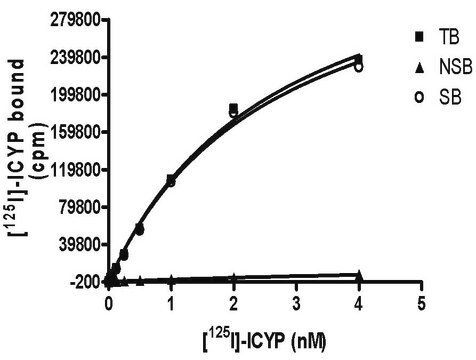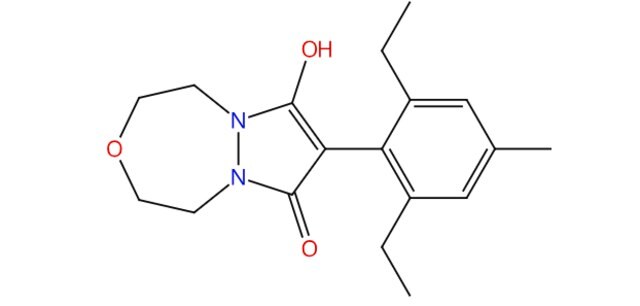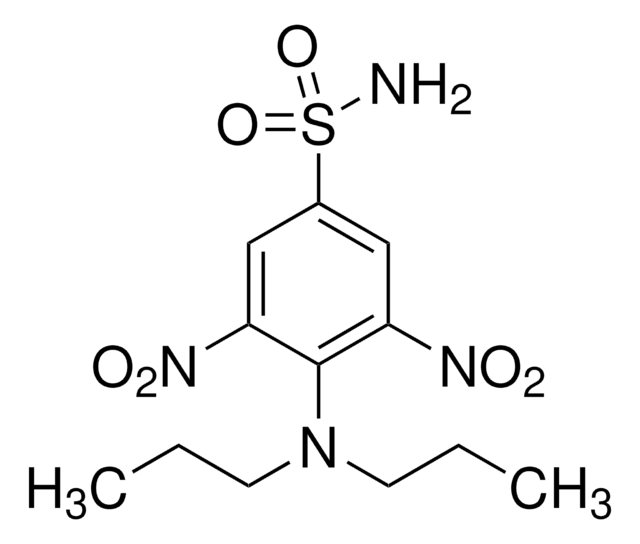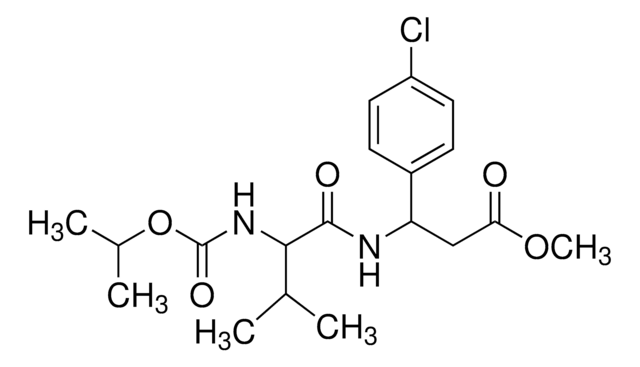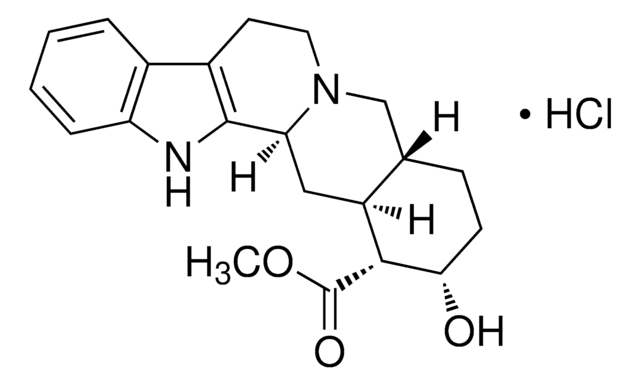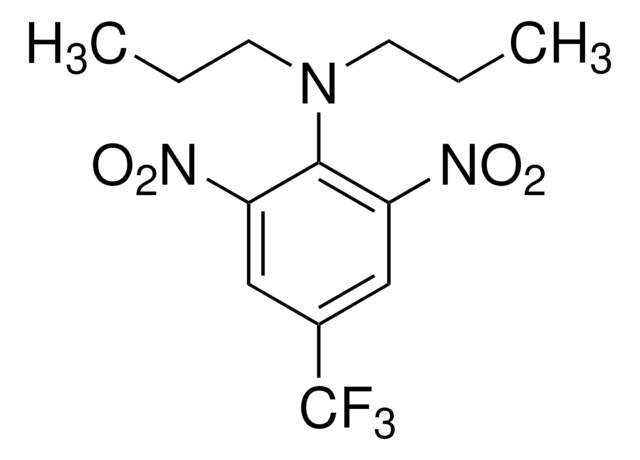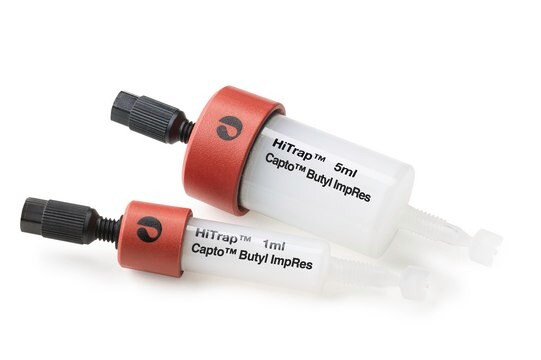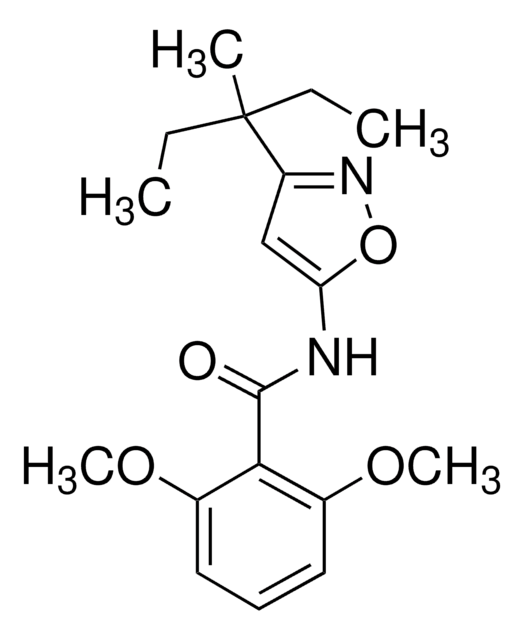HTS157M
ChemiSCREEN Human α2B Adrenergic Receptor Membrane Preparation
Human alpha2B GPCR membrane prepation for Radioligand binding Assays.
Sign Into View Organizational & Contract Pricing
All Photos(2)
About This Item
UNSPSC Code:
41106514
eCl@ss:
32161000
NACRES:
NA.84
Recommended Products
biological source
human
Quality Level
recombinant
expressed in Chem-1 cells
manufacturer/tradename
ChemiScreen
Chemicon®
technique(s)
radioligand binding assay (RLBA): suitable
NCBI accession no.
UniProt accession no.
shipped in
dry ice
General description
Full-length human ADRA2B transcript cDNA encoding α2B.
The endogenous catecholamines epinephrine and norepinephrine have profound effects on smooth muscle activity, cardiac function, carbohydrate and fat metabolism, hormone secretion, neurotransmitter release, and central nervous system actions. These activities are mediated by GPCRs belonging to two subfamilies, the α- and β-adrenoceptors (Bylund et al., 1994). The α2 adrenergic receptor subfamily members, consisting of α2A, α2B, and α2C, couple primarily to Gi to inhibit cAMP production, and play an important role in regulation of cardiovascular and CNS function. Experiments with α2A-selective agonists and mice lacking α2A demonstrate that activation of α2A results in hypotension, sedation, analgesia, and hypothermia (Kable et al., 2000). Chemicon′s α2B membrane preparations are crude membrane preparations made from our proprietary stable recombinant cell lines to ensure high-level of GPCR surface expression; thus, they are ideal HTS tools for screening of agonists and antagonists at α2B. The membrane preparations exhibit a Kd of 11.5 nM for [3H]-Rauwolscine. With 15 nM [3H]-Rauwolscine, 5 µg/well α2B Membrane Prep typically yields greater than 30-fold signal-to-background ratio.
Biochem/physiol Actions
Protein Target: alpha2B
Quality
Table 1. Signal:background and specific binding values obtained in a competition binding assay with α2B membrane prep and unlabeled rauwolscine.
SPECIFICATIONS: 1 unit = 5 µg
Bmax for [3H]-rauwolscine binding: 154 pmol/mg protein
Kd for [3H]-rauwolscine binding: ~11.5 nM
| 5 µg/well | |
|---|---|
| Signal:Background | 64.7 |
| Specific Binding (cpm) | 14646 |
SPECIFICATIONS: 1 unit = 5 µg
Bmax for [3H]-rauwolscine binding: 154 pmol/mg protein
Kd for [3H]-rauwolscine binding: ~11.5 nM
Specifications
Inucbation Conditions
Membranes are mixed with radioactive ligand and unlabeled competitor (see Figures 1 and 2 for concentrations tested) in binding buffer in a nonbinding 96-well plate, and incubated for 1-2 h. Prior to filtration, an FC 96-well harvest plate (Millipore cat. # MAHF C1H) is coated with 0.33% polyethyleneimine for 30 min, then washed with 50mM HEPES, pH 7.4, 0.5% BSA. Binding reaction is transferred to the filter plate, and washed 3 times (1 mL per well per wash) with Wash Buffer. The plate is dried and counted.
Binding buffer: 50 mM Hepes, pH 7.4, 5 mM MgCl2, 1 mM CaCl2, 0.2% BSA, filtered and stored at 4°C
Radioligand: [3H]-Rauwolscine (Perkin Elmer#: NET-722)
Wash Buffer: 50 mM Hepes, pH 7.4, 500mM NaCl , 0.1% BSA, filtered and stored at 4°C.
Membranes are mixed with radioactive ligand and unlabeled competitor (see Figures 1 and 2 for concentrations tested) in binding buffer in a nonbinding 96-well plate, and incubated for 1-2 h. Prior to filtration, an FC 96-well harvest plate (Millipore cat. # MAHF C1H) is coated with 0.33% polyethyleneimine for 30 min, then washed with 50mM HEPES, pH 7.4, 0.5% BSA. Binding reaction is transferred to the filter plate, and washed 3 times (1 mL per well per wash) with Wash Buffer. The plate is dried and counted.
Binding buffer: 50 mM Hepes, pH 7.4, 5 mM MgCl2, 1 mM CaCl2, 0.2% BSA, filtered and stored at 4°C
Radioligand: [3H]-Rauwolscine (Perkin Elmer#: NET-722)
Wash Buffer: 50 mM Hepes, pH 7.4, 500mM NaCl , 0.1% BSA, filtered and stored at 4°C.
Physical form
One package contains enough membranes for at least 200 assays (units), where a unit is the amount of membrane that will yield greater than 20-fold signal:background with 3H-labeled Rauwolscine at 15 nM
Liquid in packaging buffer: 50 mM Tris pH 7.4, 10% glycerol and 1% BSA with no preservatives.
Liquid in packaging buffer: 50 mM Tris pH 7.4, 10% glycerol and 1% BSA with no preservatives.
Legal Information
CHEMICON is a registered trademark of Merck KGaA, Darmstadt, Germany
Storage Class
12 - Non Combustible Liquids
wgk_germany
WGK 2
flash_point_f
Not applicable
flash_point_c
Not applicable
Certificates of Analysis (COA)
Search for Certificates of Analysis (COA) by entering the products Lot/Batch Number. Lot and Batch Numbers can be found on a product’s label following the words ‘Lot’ or ‘Batch’.
Already Own This Product?
Find documentation for the products that you have recently purchased in the Document Library.
J W Kable et al.
The Journal of pharmacology and experimental therapeutics, 293(1), 1-7 (2000-03-29)
Mice with altered alpha(2)-adrenergic receptor genes have become important tools in elucidating the subtype-specific functions of the three alpha(2)-adrenergic receptor subtypes because of the lack of sufficiently subtype-selective pharmacological agents. Mice with a deletion (knockout) of the alpha(2A)-, alpha(2B)-, or
Our team of scientists has experience in all areas of research including Life Science, Material Science, Chemical Synthesis, Chromatography, Analytical and many others.
Contact Technical Service